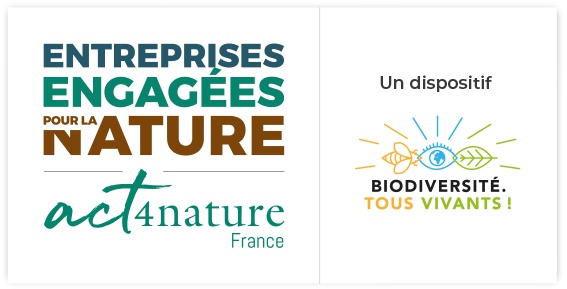We are committed to protecting our biodiversity, which is currently facing collapse and as such we are equally committed to fighting global warming because of the threat that it presents to biodiversity.
Since 2008, Caisse des Dépôts and its subsidiary CDC Biodiversité have developed measures and best practices to protect biodiversity based on the following principles:
The restoration of biodiversity should be financed,
through mandatory compensation, natural offset sites, the offsetting of agriculture, the renaturing of cities, payment programmes for environmental services, etc. The Nature 2050 programme developed by CDC Biodiversité allows companies, which voluntarily participate in the programme, to finance nature-based solutions at regional level. As a result, they help mitigate and adapt to climate change and they prevent the destruction of biodiversity. With more than €4mn allocated since 2016, approximately 850,000m2 of biodiversity has been restored and adapted and it will be monitored until 2050.
Carrying out research and raising awareness among economic actors and local authorities
The Mission on the Economics of Biodiversity (MEB), an initiative from Caisse des Dépôts that was implemented by CDC Biodiversité, researches and implements innovative economic instruments that support biodiversity. The MEB identifies, studies and experiments with innovative tools (BIODIV’2050, Cahiers de BIODIV’2050, training courses, conferences, international symposia, etc.) which focus on three areas: economic tools that support biodiversity; biodiversity and regional economics; biodiversity and companies.
Developing a tool to measure the biodiversity footprint of economic actors
CDC Biodiversité has developed the Global Biodiversity Score (GBS) that allows companies to assess their impact on diversity in all areas of their activity. This helps them to take biodiversity into greater consideration within their development strategy.
Best practices applied to institutional investor activity
Before investing in a company,
Caisse des Dépôts takes a series of environmental criteria into account when considering the company’s activity (use of raw materials, land use, degradation of fragile ecosystems, water stress, supply chain, carbon footprint products, etc.). Based on data provided by independent third parties (e.g. MSCI), these criteria are incorporated into the ESG analysis and form part of our assessment of the companies in which we invest capital. Furthermore, steps have been taken to promote dialogue between shareholders, particularly on the issue of imported deforestation.
Choosing real estate assets
Caisse des Dépôts also includes the preservation of biodiversity in its criteria for choosing specific asset classes, such as real estate assets, by promoting the “biodivercity” environmental label when acquiring new buildings (tertiary and collective buildings) and compliance with the “green building sites” charter for construction. For the everyday management of residential assets, particularly green spaces, suppliers must comply with a code of conduct “which prohibits the use of phytosanitary treatments”..
Managing forest assets
SWith regard to the management of forest assets, Caisse des Dépôts applies specific, eco certified, sustainable management practices (PEFC) and promotes biodiversity for assets managed by Société Forestière, a subsidiary of Caisse des Dépôts. The PEFC label promotes diversifying tree species, renewing forests, carrying out activities in forests when there is the smallest impact on biodiversity, limiting the use of phytosanitary products and leaving dead trees in forests because they increase the biodiversity of forest ecosystems.
Caisse des Dépôts and its subsidiaries (including Icade, Société Forestière, Egis, Compagnie des Alpes and CDC Biodiversité) have committed themselves to the “Entreprises engagées pour la nature – Act4nature France” initiative, which increases company action to support biodiversity. This also helps the company to constantly improve. It will publish a biodiversity action plan by the end of 2020.



